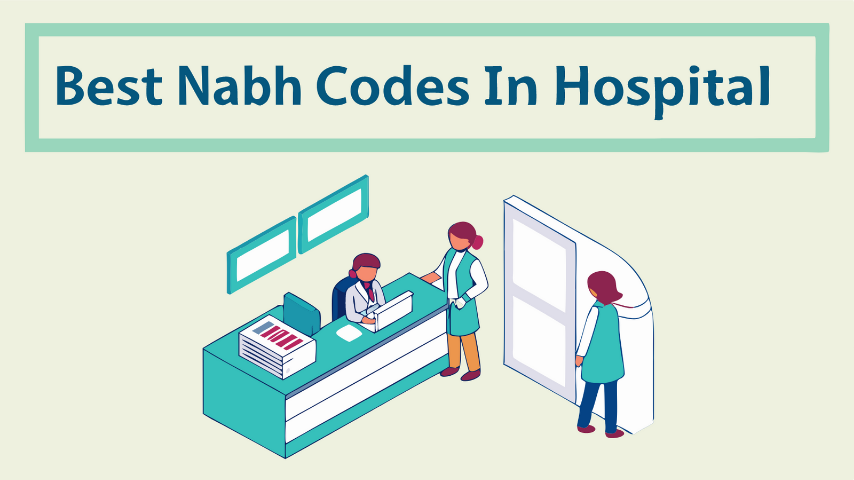In the complex environment of a hospital, quick and efficient communication during emergencies is crucial. NABH (National Accreditation Board for Hospitals & Healthcare Providers) has established a standardized code system to ensure rapid response while maintaining calm among patients and visitors. Let’s explore these emergency codes in hospital NABH settings and understand their significance in healthcare management.
Understanding NABH Hospital Code System
Hospital codes are standardized alert systems used to communicate various types of emergencies without causing panic among patients and visitors. These color-coded alerts help hospital staff respond quickly and appropriately to different situations while maintaining discretion.
Why Are Hospital Codes Important?
Quick Communication
- Enables rapid response to emergencies
- Eliminates confusion during critical situations
- Ensures discrete communication of sensitive information
Staff Coordination
- Facilitates organized emergency response
- Helps in team mobilization
- Streamlines crisis management procedures
Patient Safety
- Maintains calm environment
- Prevents panic among visitors
- Ensures efficient emergency handling
Common Emergency Codes in NABH Hospitals
Code Red: Fire Emergency
- Indicates fire outbreak or smoke
- Triggers immediate evacuation procedures
Activates R.A.C.E protocol:
- Rescue patients in immediate danger
- Activate fire alarm
- Contain fire by closing doors
- Extinguish/Evacuate based on situation
Code Blue: Medical Emergency
- Signals cardiac or respiratory arrest
- Requires immediate resuscitation team response
Components include:
- CPR team activation
- Emergency equipment mobilization
- Time-critical intervention
Code Black: Bomb Threat
- Indicates potential explosive device
- Initiates security protocols
Key actions:
- Area isolation
- Police notification
- Systematic search procedures
Code Pink: Child/Infant Abduction
- Alerts staff about missing child/infant
- Triggers immediate security measures
Response includes:
- Exit point monitoring
- Systematic facility search
- Law enforcement notification
Code Purple: Hostage Situation
- Indicates security emergency
- Requires immediate security team response
Protocol includes:
- Area containment
- Police coordination
- Staff safety measures
Additional NABH Emergency Codes
Code Orange: Mass Casualty
- Activated during disasters
- Prepares hospital for multiple casualties
Includes:
- Emergency department preparation
- Staff mobilization
- Resource allocation
Code Grey: Violent Person
- Indicates aggressive individual
- Requires security intervention
Actions include:
- Patient/staff protection
- De-escalation techniques
- Security team response
Code Yellow: Disaster Alert
- External emergency warning
- Prepares facility for potential impact
Measures include:
- Resource assessment
- Staff preparedness
- Emergency protocol review
Implementation and Training
Staff Training Requirements
- Regular code drills
- Emergency response training
- Documentation procedures
- Communication protocols
- Role-specific responsibilities
Emergency Response Equipment
- Code carts
- Communication devices
- Personal protective equipment
- Emergency supplies
- Documentation materials
Best Practices for Code Implementation
Clear Communication
- Use standardized terminology
- Maintain calm, professional tone
- Confirm message receipt
Regular Updates
- Review codes periodically
- Update protocols as needed
- Incorporate feedback
Documentation
- Record all incidents
- Track response times
- Analyze effectiveness
Q1: What is the most common emergency code in hospitals?
Code Blue is typically the most frequently used emergency code, indicating a medical emergency requiring immediate resuscitation team response.
Q2: How often should hospital staff undergo code training?
Hospital staff should undergo comprehensive code training at least annually, with quarterly drills for critical codes like Code Blue and Code Red.
Q3: Are hospital codes standardized across all NABH facilities?
While NABH provides guidelines, there might be slight variations between facilities. However, critical codes like Blue, Red, and Pink are generally standardized.
Q4: What happens after a code is called?
When a code is called, designated team members respond according to established protocols, followed by documentation and incident review.
Q5: How are code responses evaluated?
Code responses are evaluated through:
- Response time measurement
- Protocol adherence assessment
- Team performance review
- Documentation completeness
- Outcome analysis
Technological Integration in Code Management
Modern hospitals integrate technology to enhance code response:
- Automated alert systems
- Mobile communication devices
- Electronic documentation
- Real-time tracking systems
- Performance analytics
Regular Code Review and Updates
To maintain effectiveness, hospitals should:
- Conduct monthly code reviews
- Update protocols based on experiences
- Incorporate new guidelines
- Address identified gaps
- Enhance response procedures
Conclusion
Emergency codes in hospital NABH settings play a vital role in maintaining patient safety and ensuring efficient emergency response. The standardized code system helps healthcare facilities manage various emergencies while maintaining calm and order. Regular training, clear communication, and continuous improvement of protocols ensure that hospital staff can respond effectively to any situation.
Success in emergency response depends on:
- Thorough staff training
- Clear communication channels
- Regular protocol updates
- Efficient team coordination
- Proper documentation
By following NABH guidelines and maintaining high standards in code implementation, hospitals can ensure better patient outcomes and safer healthcare environments. Remember, the key to effective emergency response lies in preparation, practice, and precise execution of established protocols.




